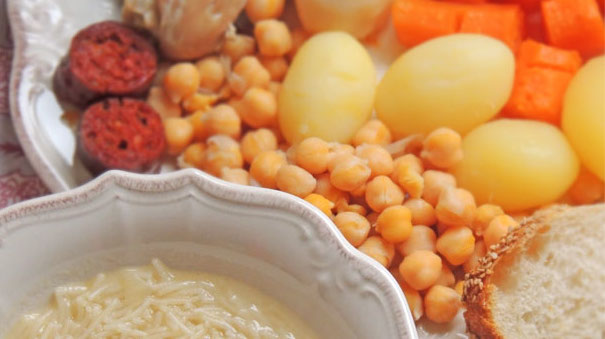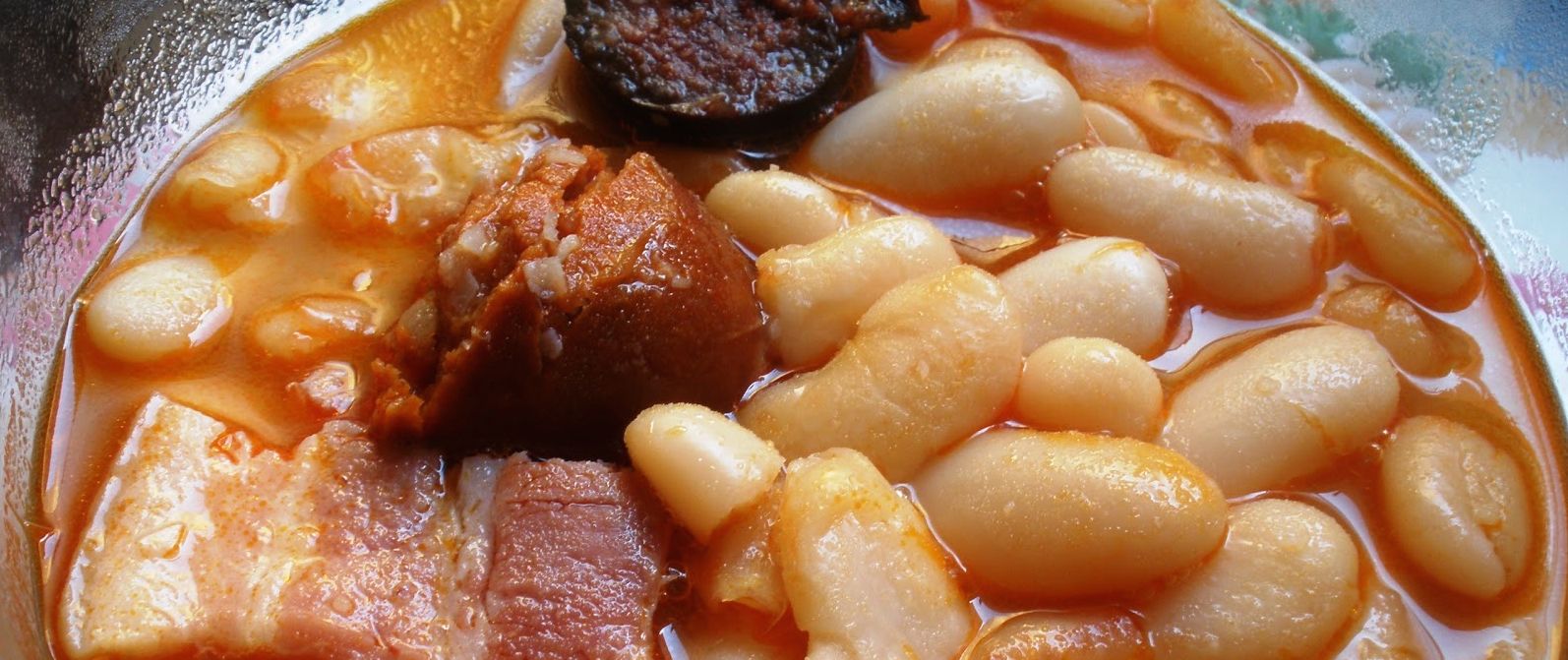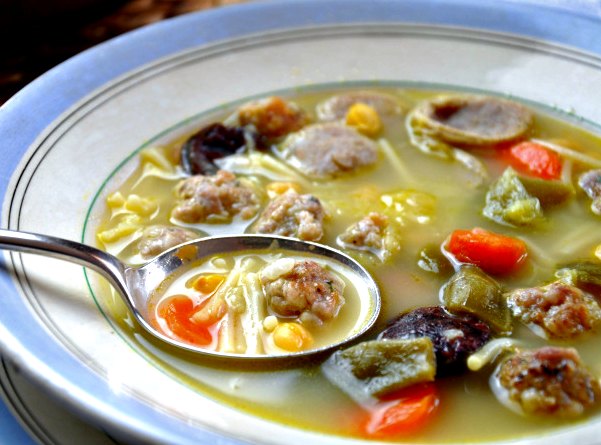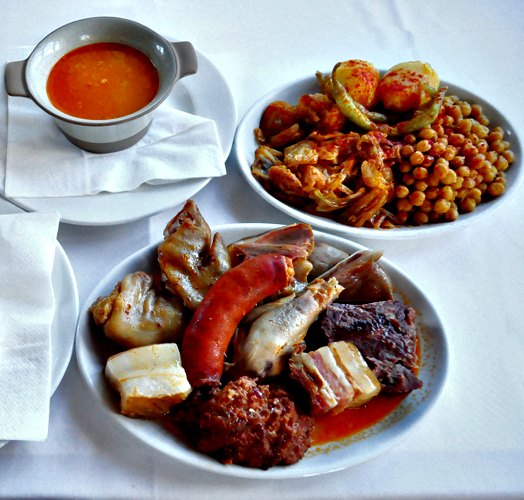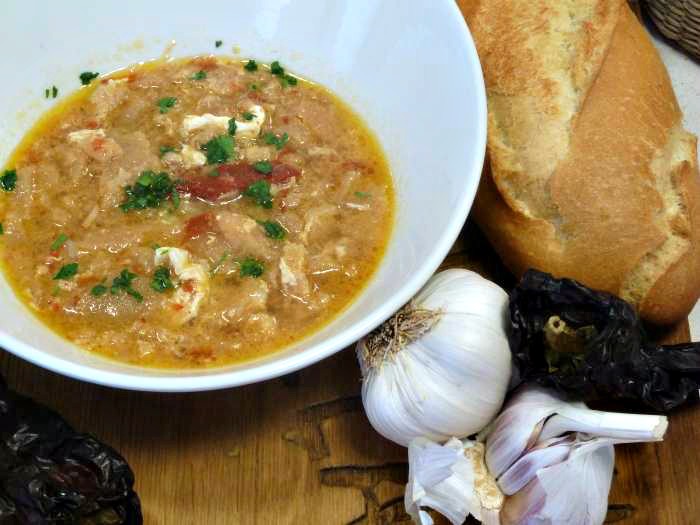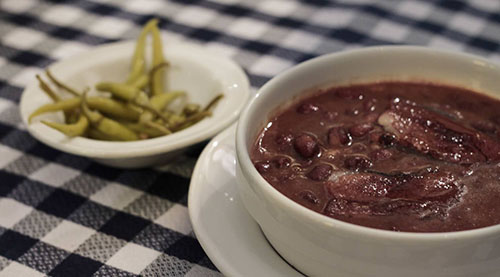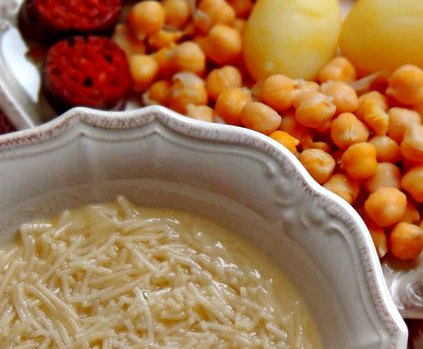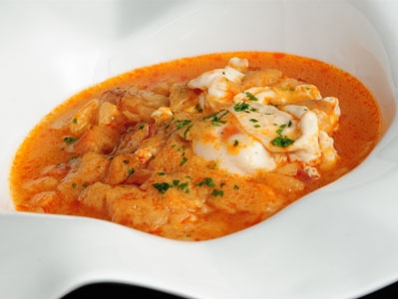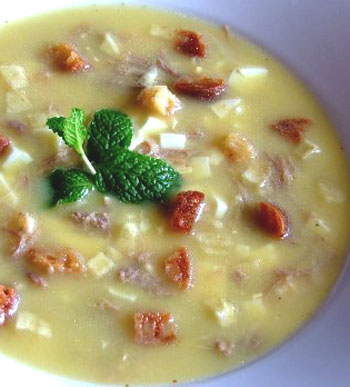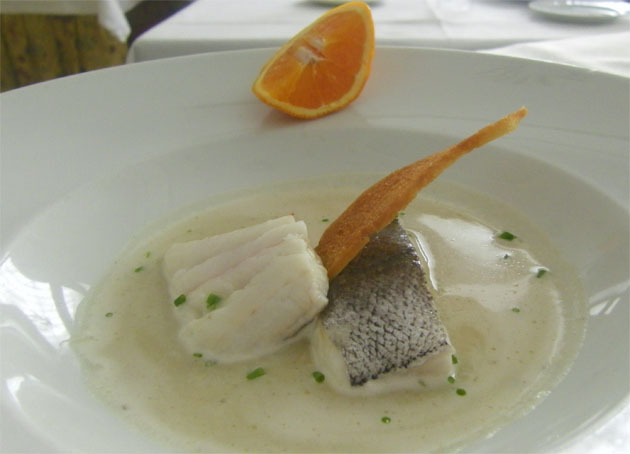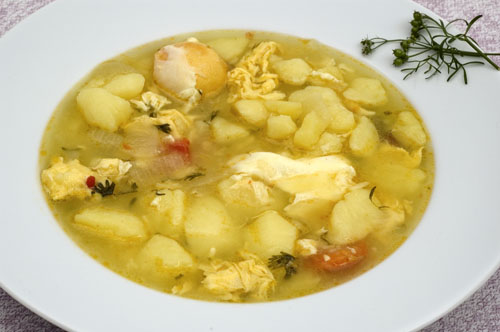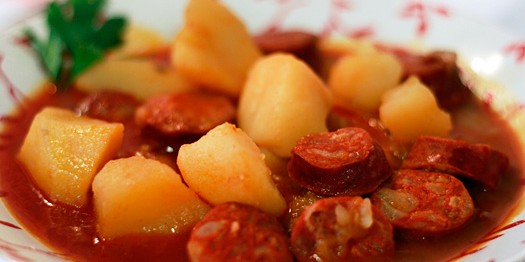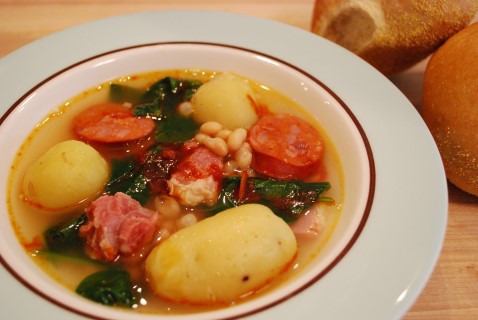Spanish Soup recipes (Platos de cuchara)
Scores of soups and legume stews, called platos de cuchara, literally “dishes eaten with a spoon,” are beloved across the country. Many of them are regional variations of national favourites, and in this section, we have included recipes that reflect that diversity.
From light starters...
They range from clear soups to soups based on bread or potatoes to bean soups to cocidos, the hearty chickpea stews that are a meal-in-a-pot and are found in various guises in every region. Among the clear soups you will find are a trio built on seafood, yet each made distinctive by the addition of a particular ingredient, such as the bitter orange in caldillo de perro, the mayonnaise in gazpachuelo de Málaga, and the saffron in sopa de pescado. You will also discover sopa de picadillo, a chicken brothlaced with jamón serrano, chicken, and mint. All these soups are eaten as a first course.
Fabada, the worlds' most famous bean pot comes from the wild mountains of Asturias. The beans are flavoured with all the local specialities like lacón, which is the cured front leg of a pig and oak-smoked fresh sausages.
So are a variety of bread-based soups, including the simple but delicious sopa de ajo, a fragrant garlic soup known as sopa castellana in central Spain. Its main ingredient is day-old bread, evidence of the frugality of Spanish cooks, and despite its humble makings, it is offered today in many restaurants. Two other bread soups, zurrukutuna, which includes salt cod, and sopas mallorquinas, which marries bread slices and a gardenful of vegetables, are somewhat heartier, yet are still first courses.
Even substantial bean and lentil soups, such as pochas, alubias de Tolosa, fabada, fabes con almejas, and caldo gallego, arrive at the table before the main dish, some of them quite rich because of the addition of various sausages.
... to Full meals
The cocidos, in contrast, are meals in themselves. Each region boasts its own version of this chickpea stew, from the cocido madrileño and cocido maragato of the Castiles to the Catalan escudella and the Canarian puchero de lujo.
|
Escudella means "bowl," and in Catalonia it is the name of a big stew-soup, escudella i carn d'olla, usually made for Christmas. The rustic taste of this stew is evident in the bones and feet, whose gelatin give such an unctuousness to the dish, and in the rough vegetables such as cabbage and turnips that were so common in the mountains and hills. |
Cocido maragato: Maragatería is a county in the province of León, well known in Spain for its beautiful medieval architecture and for its cocido maragato. The cocido owes much of its fame to its use of two local products, spicy chorizos and cecina (salted beef), and to the fact that it is the only Spanish cocido that is eaten in reverse order: the meats and sausages are served first, followed by the legumes and vegetables, and finally the soup.
Although ingredients vary from region to region, the concept is the same: a robust stew served as a whole meal in three stages. The first course is the broth that results from cooking the meats and chickpeas, the second features the chickpeas and vegetables, and the final course is the meats. (The exception to this progression is cocido maragato, which is served in the reverse order.)
Some cocidos include a relleno or pelota, literally “stuffing” or “meatball.” They are made from bread crumbs, garlic, and parsley or from ground meat or sausages, are added to the stew toward the end of cooking, and are served with the meat course.
Some dishes call for specialty meats, sausages, and even legumes that are not easy to find outside of Spain. For instance, fabes from Asturias, the buttery white beans that melt in your mouth, are difficult, though not impossible, to buy elsewhere, but I have had good results using white lima beans in their place.
Lacón, semicured pork shoulder from Galicia; cecina, salted beef from León; and special regional varieties of chorizo and morcilla (blood sausage) are not available in the United States either. But tracking down generic Spanish chorizo and morcilla will allow you to come close to the original platos de cuchara.
You may be also interested in...
Our favourite "de cuchara" recipes
Zurrukutuna - Bread soup with Salt Cod: Salt cod is the star of this hearty winter soup, which is basically a simple garlic soup dressed up with the popular fish. The name comes from the onomatopoeic Basque word zurrup, a “sip” or “slurp,” and kutuna, which means “pleasant.”
Alubias Rojas de Tolosa: The dried red beans of the region are particularly flavorful and thus highly prized. If you should visit Tolosa one day, seek out one of the numerous bars or restaurants there that serves this red bean stew, which is traditionally accompanied with the spicy-hot pickled peppers known as guindillas.
"Cocido madrileño" could be defined as a combination of all the "cocidos" prepared in the rest of Spain and even America and its preparation depends more on the availability of products and the climate than anything else. As a result the chickpea has become the most valued pulse in the region. It is in fact used in many more traditional dishes other than the "cocido", such as the chickpea and vegetable stew and is often served with spinach and cod.
Sopa de ajo (garlic soup): Bread and garlic soups are eaten for supper by the poor all over the country. This garlic soup is fortified with eggs and canned tuna, which I suspect has come to replace the traditional salt cod.
Sopa de picadillo: I never tire of eating this simple delight. When I am preparing stock specifically for this soup, I usually reserve a chicken breast to simmer, shred, and add to the pot. If you are using homemade frozen stock or store-bought stock, it is fine to omit the chicken breast.
Caldillo de perro: The touch of bitter orange gives this fish soup an original flavor. Outside Andalusia, it is unusual to find bitter orange in any recipe, mainly because the trees are planted primarily in this part of Spain.
Caldo de Papas y Huevos: The eggs in this simple potato soup from the Canaries are added in two ways: first, the beaten egg is stirred in, turning the broth opaque, and then whole eggs are added at the last moment with just enough time to allow them to set before the soup is served.
Patatas a la Riojana: When the acclaimed French chef Paul Bocuse was asked to prepare a banquet for the hundredth anniversary of a famous winery in La Rioja, he shared this dish with the kitchen staff and apparently requested a second and then third serving for himself!
Caldo Gallego: Restaurant chefs in Galicia usually prepare this soup with many ingredients in multiple pots. But at home, most Gallegos make a straightforward recipe: just one stockpot in which everything is cooked together, with the ingredients added according to the time required to cook them. When turnip greens are out of season, they use cabbage instead.
